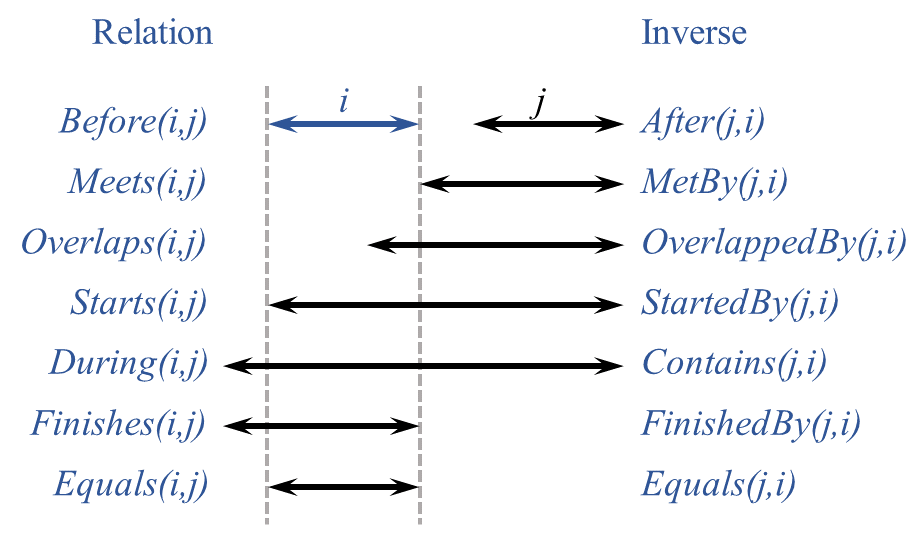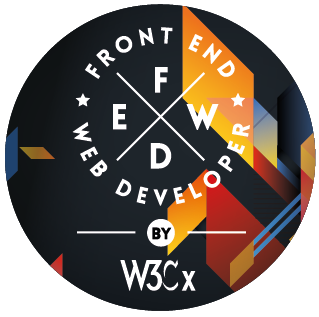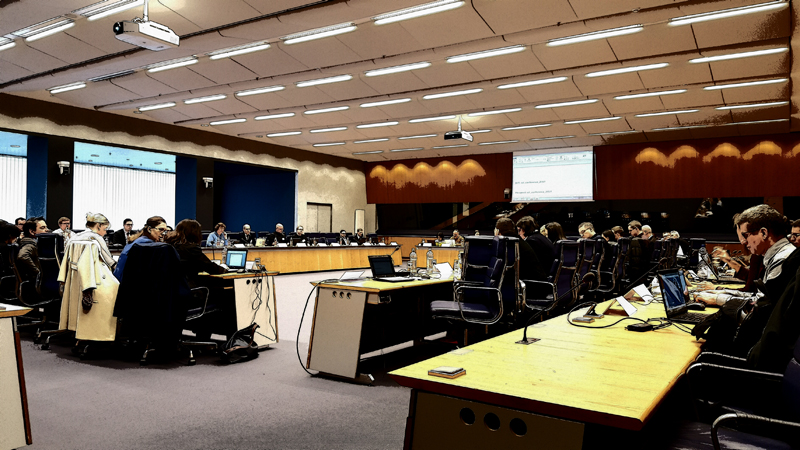The Web of Things (WoT) Working Group has published the first draft of its Group Note of Web of Things (WoT) Security and Privacy Considerations. This document provides non-normative guidance on Web of Things (WoT) security and privacy. The Web of Things is descriptive, not prescriptive, and so is generally designed to support the security models and mechanisms of the systems it describes, not introduce new ones.
Search Engine Marketing| seo tips | w3c Release | Unlock the secrets of SEO success and W3C standards mastery on our blog. Elevate your online presence with expert insights, staying visible and accessible
Thursday, December 28, 2017
Update to Three Candidate Recommendations of CSS Working Group
The CSS Working Group invites implementations of three updated Candidates Recommendations:
CSS Counter Styles Level 3: This module introduces the ‘@counter-style’ rule, which allows authors to define their own custom counter styles for use with CSS list-marker and generated-content counters [CSS-LISTS-3]. It also predefines a set of common counter styles, including the ones present in CSS2 and CSS2.1.
CSS Grid Layout Module Level 1: This CSS module defines a two-dimensional grid-based layout system, optimized for user interface design. In the grid layout model, the children of a grid container can be positioned into arbitrary slots in a predefined flexible or fixed-size layout grid.
CSS Scroll Snap Module Level 1: This module contains features to control panning and scrolling behavior with “snap positions”.
CSS is a language for describing the rendering of structured documents (such as HTML and XML) on screen, on paper, in speech, etc.
Thursday, December 21, 2017
HTML 5.2 is now a W3C Recommendation
 The Web Platform Working Group has published a W3C Recommendation of the HTML 5.2 specification that would obsolete the HTML 5.1 Recommendation.
The Web Platform Working Group has published a W3C Recommendation of the HTML 5.2 specification that would obsolete the HTML 5.1 Recommendation.
The HTML 5.2 specification defines the 5th major version, second minor revision of the core language of the World Wide Web: the Hypertext Markup Language (HTML). In this version, new features continue to be introduced to help Web application authors, new elements continue to be introduced based on research into prevailing authoring practices, and special attention continues to be given to defining clear conformance criteria for user agents in an effort to improve interoperability.
The group also published a First Public Working Draft of HTML 5.3, which defines the 5th major version, third minor revision of the core language of the World Wide Web: the Hypertext Markup Language (HTML).
WAI-ARIA 1.1, Core-AAM 1.1, DPub-ARIA 1.0, and DPub-AAM 1.0 are W3C Recommendations
The Accessible Rich Internet Applications (ARIA)Working Group has published Accessible Rich Internet Applications (WAI-ARIA) 1.1, Core Accessibility API Mappings 1.1, Digital Publishing WAI-ARIA Module 1.0, and Digital Publishing Accessibility API Mappings 1.0 as W3C Recommendations. WAI-ARIA provides an ontology of roles, states, and properties that define accessible user interface elements and can be used to improve the accessibility and interoperability of web content and applications. These semantics are designed to allow an author to properly convey user interface behaviors and structural information to assistive technologies in document-level markup. DPub-ARIA extends WAI-ARIA with roles specific to helping users of assistive technologies navigate through long-form documents used in digital publishing. DPub-AAM describes how these roles map to features of platform accessibility APIs. WAI-ARIA 1.1 is supported by WAI-ARIA Authoring Practices 1.1 which has been published as a Working Group Note. More information about these publications is available in the WAI-ARIA 1.1 is Recommendation email and the WAI-ARIA 1.1 Authoring Practices Note blog post. Read about the Web Accessibility Initiative (WAI).
Call for Review: CSS Basic User Interface Module Level 3 (CSS3 UI) is a W3C Proposed Recommendation
The CSS Working Group has published a Proposed Recommendation of CSS Basic User Interface Module Level 3 (CSS3 UI). This specification describes user interface related properties and values that are proposed for CSS level 3 to style HTML and XML (including XHTML). It includes and extends user interface related features from the properties and values of CSS level 2 revision 1. It uses various properties and values to style basic user interface elements in a document.
CSS is a language for describing the rendering of structured documents (such as HTML and XML) on screen, on paper, in speech, etc. Comments are welcome through 1 February 2018.
Labels:
css,
css Working Group,
CSS3
Tuesday, December 12, 2017
First Public Working Draft: Payment Method Manifest
The Web Payments Working Group has published a First Public Working Draft of Payment Method Manifest. This specification is designed to increase the security of payment applications. It defines the machine-readable manifest file, known as a payment method manifest, that describes how a payment method participates in the Web Payments ecosystem.
Web Content Accessibility Guidelines (WCAG) 2.1 final Working Draft
A final Working Draft of Web Content Accessibility Guidelines (WCAG) 2.1 has been published for wide review before a planned advance to Candidate Recommendation in January 2018. Web Content Accessibility Guidelines (WCAG) 2.1, which extends Web Content Accessibility Guidelines 2.0, covers a wide range of recommendations for making Web content more accessible to people with disabilities, and more usable to users in general. Please comment no later than 12 January 2018 in the WCAG 2.1 GitHub repository or by email to public-agwg-comments@w3.org.
Update to the Candidate Recommendation: CSS Writing Modes Level 3; First Public Working Draft: CSS Writing Modes Level 4
The CSS Working Group invites implementations of an updated Candidate Recommendation of CSS Writing Modes Level 3. This document defines CSS support for various international writing modes, such as left-to-right (e.g. Latin or Indic), right-to-left (e.g. Hebrew or Arabic), bidirectional (e.g. mixed Latin and Arabic) and vertical (e.g. Asian scripts).
Along with this updated Candidate Recommendation, the group also published a First Public Working Draft of CSS Writing Modes Level 4. The difference from the CSS Writing Modes Level 3 is the set of features that were deferred from Level 3 due to later implementation uptake.
CSS is a language for describing the rendering of structured documents (such as HTML and XML) on screen, on paper, in speech, etc.
Labels:
css,
css Working Group,
HTML,
XML
Tuesday, November 28, 2017
W3C Strategic Highlights – November 2017
![Core innovation [Lightbulb design credit: Freepik]](https://www.w3.org/2017/Talks/tpac-slides/tpac2017-jeff/Pictures/coreinnovation.jpg) W3C released today its W3C Strategic Highlights – November 2017, a comprehensive survey of the essential work W3C conducts to achieve a Web for All, and select recent work in many areas where the Web can solve arising problems for real people.
W3C released today its W3C Strategic Highlights – November 2017, a comprehensive survey of the essential work W3C conducts to achieve a Web for All, and select recent work in many areas where the Web can solve arising problems for real people.
A strong emphasis in this report is on the core of the Web and how selected technologies and features amount to incredible core innovation once again. Our vision of the Web for 2020 and beyond encompasses long-resident Web Applications, extending browser features, offline support, app-like performance, a flexible platform accommodating Digital Publishing, payments, video distribution, games, and immersive experiences.
The W3C Strategic Highlights focus on how our strategy and workflows support the advancement of the Web, how W3C meets Industry needs, fosters a Web for all and how W3C is embarking on the next transformation of the Web.
We also invite you to read W3C CEO’s thoughts on TPAC2017, our yearly event where W3C work group meet face-to-face, which we held last week in the San Francisco area and was highly successful for the energetic presentations it generated, and the lively conversations it allows nearly 1,000 attendees to have.
Call for Review: HTML Media Capture is a W3C Proposed Recommendation
The Device and Sensors Working Group has published a Proposed Recommendation of HTML Media Capture. The HTML Media Capture specification defines an HTML form extension that facilitates user access to a device’s media capture mechanism, such as a camera, or microphone, from within a file upload control. Comments are welcome through 26 December 2017.
Second Patent Advisory Group for Web Payments Working Group Launched
In accordance with the W3C Patent Policy, W3C has launched a Web Payments Working Group Patent Advisory Group (PAG) in response to disclosures related to specifications of the Web Payments Working Group; see the PAG charter. W3C launches a PAG to resolve issues in the event a patent has been disclosed that may be essential, but is not available under the W3C Royalty-Free licensing requirements. Public comments regarding these disclosures may be sent to public-wpwg-pag@w3.org (public archive). Learn more about Patent Advisory Groups.
Thursday, November 2, 2017
W3C Invites Implementations of Preload
The Web Performance Working Group invites implementations of the Preload Candidate Recommendation. This specification defines the
preloadkeyword that may be used with link elements. This keyword provides a declarative fetch primitive that initiates an early fetch and separates fetching from resource execution.Time Ontology in OWL is a W3C Recommendation
 The Spatial Data on the Web Working Group has published a W3C Recommendation of the Time Ontology in OWLspecification. The ontology provides a vocabulary for expressing facts about topological (ordering) relations among instants and intervals, together with information about durations, and about temporal position including date-time information. Time positions and durations may be expressed using either the conventional (Gregorian) calendar and clock, or using another temporal reference system such as Unix-time, geologic time, or different calendars.
The Spatial Data on the Web Working Group has published a W3C Recommendation of the Time Ontology in OWLspecification. The ontology provides a vocabulary for expressing facts about topological (ordering) relations among instants and intervals, together with information about durations, and about temporal position including date-time information. Time positions and durations may be expressed using either the conventional (Gregorian) calendar and clock, or using another temporal reference system such as Unix-time, geologic time, or different calendars.Wednesday, October 18, 2017
Industry Experts to Share Business Insights at W3C’s First Executive Forum, 8 November in San Francisco
 Executives from Alipay, American Express, Bloomberg, HARMAN, Google, Intel, Mozilla, Samsung, Southern Nevada Regional Transportation Agency, University of Sydney, Worldpay and Yubico, together with Web Inventor and W3C Director Sir Tim Berners-Lee, will address emerging tech trends and the impact of the Web on business and industry at the World Wide Web Consortium’s (W3C) inaugural Web Executive Forum.
Executives from Alipay, American Express, Bloomberg, HARMAN, Google, Intel, Mozilla, Samsung, Southern Nevada Regional Transportation Agency, University of Sydney, Worldpay and Yubico, together with Web Inventor and W3C Director Sir Tim Berners-Lee, will address emerging tech trends and the impact of the Web on business and industry at the World Wide Web Consortium’s (W3C) inaugural Web Executive Forum.
“Web application areas are revolutionizing many business models in Digital Publishing, FinTech, Automotive, Telco, Smart Manufacturing and Entertainment. W3C has created an event designed to provide value and insight to executives across a wide range of industries with a goal of providing rich content and some food for thought,” said J. Alan Bird, W3C Global Business Development Leader.
Tuesday, August 8, 2017
W3C Invites Implementations of HTML 5.2
8 August 2017 | Archive
The Web Platform Working Group invites implementations of HTML 5.2 Candidate Recommendation. This specification defines the 5th major version, second minor revision of the core language of the World Wide Web: the Hypertext Markup Language (HTML). In this version, new features continue to be introduced to help Web application authors, new elements continue to be introduced based on research into prevailing authoring practices, and special attention continues to be given to defining clear conformance criteria for user agents in an effort to improve interoperability.
W3C Invites Implementations of CSS Containment Module Level 1
8 August 2017 | Archive
The CSS Working Group invites implementations of CSS Containment Module Level 1 Candidate Recommendation. This CSS module describes the ‘contain’ property, which indicates that the element’s subtree is independent of the rest of the page. This enables heavy optimizations by user agents when used well.
CSS is a language for describing the rendering of structured documents (such as HTML and XML) on screen, on paper, in speech, etc.
Wednesday, June 21, 2017
W3C Announces its First Publishing Summit and New Publishing Standards Work
 W3C opened today registration for its first ever W3C Publishing Summit to be held 9-10 November 2017 in San Francisco, California, co-located with the W3C’s Technical Plenary and Advisory Committee meetings (TPAC 2017), and calls for speakers by 15 July 2017. The inaugural W3C Publishing Summit will show how publishers are using today’s Web technologies to make publications more effective and workflows more efficient.
W3C opened today registration for its first ever W3C Publishing Summit to be held 9-10 November 2017 in San Francisco, California, co-located with the W3C’s Technical Plenary and Advisory Committee meetings (TPAC 2017), and calls for speakers by 15 July 2017. The inaugural W3C Publishing Summit will show how publishers are using today’s Web technologies to make publications more effective and workflows more efficient.
W3C launched last week its new Publishing Working Group, just a few months following the combination of IDPF and W3C, with a mission to provide the necessary technologies on the Open Web Platform to make the combination of traditional publishing and the Web complete in terms of accessibility, usability, portability, distribution, archiving, offline access, and reliable cross referencing.
Read the Media Advisory and Blog post to learn about the event and major milestones for Publishing at W3C.
Wednesday, May 17, 2017
First Public Working Draft: Orientation Sensor
The Device and Sensors Working Group has published a Working Draft of Orientation Sensor. This specification defines a base orientation sensor interface and concrete sensor subclasses to monitor the device’s physical orientation in relation to a stationary three dimensional Cartesian coordinate system.
Motion Sensors Explainer Note Published
The Device and Sensors Working Group has published a Group Note of Motion Sensors Explainer. This explainer is an introduction to low-level and high-level motion sensors, their relationship, inner workings and common use-cases. Common cases of event filtering and sensor fusion are introduced with examples, showing how to apply that on sensors following the Generic Sensor API specification
Spatial Data on the Web Best Practices Note Published
The Spatial Data on the Web Working Group has published a Group Note of Spatial Data on the Web Best Practices. This document advises on best practices related to the publication of spatial data on the Web and the use of Web technologies as they may be applied to location. The best practices presented here are intended for practitioners, including Web developers and geospatial experts, and are compiled based on evidence of real-world application. These best practices suggest a significant change of emphasis from traditional Spatial Data Infrastructures by adopting an approach based on general Web standards. As location is often the common factor across multiple datasets, spatial data is an especially useful addition to the Web of data.
Wednesday, April 26, 2017
W3C Marks Second Anniversary of W3Cx with New Training Offerings for Web Developers
25 April 2017 | Archive
 Just two years after launching its first HTML5 course on W3Cx, W3C is expanding its program offerings with an introductory level course in JavaScriptdevelopment, created in partnership with University Côte d’Azur. Additionally, W3C is launching a “Front-End Web Developer” Professional Certificate on edX.org, which consists of a suite of five W3Cx courses on the three foundational languages that power the Web: HTML5, CSS and JavaScript. All courses, designed to build or advance critical skills in Front-End Web development, are open for enrollment and will start on May 30. This second anniversary also includes the milestone of exceeding enrollment goals with nearly 400,000 students from every world country. Read more in the press release.
Just two years after launching its first HTML5 course on W3Cx, W3C is expanding its program offerings with an introductory level course in JavaScriptdevelopment, created in partnership with University Côte d’Azur. Additionally, W3C is launching a “Front-End Web Developer” Professional Certificate on edX.org, which consists of a suite of five W3Cx courses on the three foundational languages that power the Web: HTML5, CSS and JavaScript. All courses, designed to build or advance critical skills in Front-End Web development, are open for enrollment and will start on May 30. This second anniversary also includes the milestone of exceeding enrollment goals with nearly 400,000 students from every world country. Read more in the press release.
Labels:
css,
html5,
javascript,
w3c,
W3Cx
Call for Review: XSL Transformations (XSLT) Version 3.0 Proposed Recommendation Published
18 April 2017 | Archive
The XSLT Working Group has published a Proposed Recommendation of XSL Transformations (XSLT) Version 3.0. This specification defines the syntax and semantics of XSLT 3.0, a language designed primarily for transforming XML documents into other XML documents. XSLT 3.0 is a revised version of the XSLT 2.0 Recommendation published on 23 January 2007. The primary purpose of the changes in this version of the language is to enable transformations to be performed in streaming mode, where neither the source document nor the result document is ever held in memory in its entirety. Another important aim is to improve the modularity of large stylesheets, allowing stylesheets to be developed from independently-developed components with a high level of software engineering robustness. Comments are welcome through 19 May.
QB4ST: RDF Data Cube extensions for spatio-temporal components Note Published
18 April 2017 | Archive
The Spatial Data on the Web Working Group has published a Group Note of QB4ST: RDF Data Cube extensions for spatio-temporal components. This document describes an extension to the existing RDF Data Cube ontology to support specification of key metadata required to interpret spatio-temporal data. The RDF Data Cube defines CodedProperties, which relate to a reference system based on a list of terms. QB4ST provides generalized support for numeric and other ordered references systems, particularly Spatial Reference Systems and Temporal Reference Systems.
Monday, April 17, 2017
EC WEB ACCESSIBILITY DIRECTIVE EXPERT GROUP (WADEX)

The European Commission (EC) recently launched the Web Accessibility Directive Expert Group (WADEX). This group has the mission “to advise the Commission in relation to the preparation of delegated acts, and in the early stages of the preparation of implementing acts” in relation to the EU Directive on the accessibility of the websites and mobile applications of public sector bodies.
More specifically, the focus of this group is to advise the EC on the development of:
- methodologies for monitoring and reporting of compliance of accessibility requirements for websites and mobile apps;
- technical specifications for accessibility requirements for mobile apps (and websites);
- statements of accessibility;
- user experience / user experience design.
This relates closely to the development of the W3C Web Content Accessibility Guidelines (WCAG) 2.1, which is expected to provide improvements for mobile accessibility. It also relates to several other W3C resources on web accessibility, including the Website Accessibility Conformance Evaluation Methodology (WCAG-EM) and its Report Generator, as well as Involving Users in Evaluating Web Accessibility.
I am delighted to have been appointed as an expert to the WADEX sub-group, to represent W3C. With this effort I hope we can further improve the harmonization of web accessibility standards and practices across Europe and internationally, also in line with the EC objectives for a single digital market.
Thursday, April 13, 2017
W3C responds to UNESCO concerns about Encrypted Media Extensions
 UNESCO recently published a letter and an article about Encrypted Media Extensions. Since we didn’t have an opportunity to set the record straight with them, we are responding here.
UNESCO recently published a letter and an article about Encrypted Media Extensions. Since we didn’t have an opportunity to set the record straight with them, we are responding here.
The spirit of the letter is anchored in UNESCO’s values and the concept of Internet Universality. We agree on the concept of Internet Universality. We even believe that those who are trying to restrict movies from the Internet are violating the concept of universality by preventing certain content from being on the Web.
We note that EME does in fact provide improvements in privacy, security and accessibility over the alternatives.
- The alternative to EME allowing interaction with copyrighted content in Web browser plugins is abandoning the Web. Without in-browser decryption ability, content providers would use their own native application, which will have much more leeway to spy on the user, and possibly infect their machine.
- With EME, the browser can protect the user from the worst effects of the DRM system, by putting it in a processing “sandbox”, such that access to network, user’s data or machine is only permitted as allowed by the sandbox, thus offering protection against things like the root kit problems and privacy breaches we have had in the past.
- Regarding accessibility, analysis and testing confirmed that the specification’s approach to captions, transcripts and audio description does not block access to this accessibility information. Moreover, since EME recommends that accessibility information is transmitted without any encryption, it is particularly suited (EME and accessibility) for accessible and legal fair use where accessibility is concerned – including accessibility adaptations to the video stream itself.
When UNESCO suggests that laws such as DMCA are against UN principles, we note that their colleagues at WIPO have been a motivating force behind such laws. We would urge UNESCO to use its own weight to insist that Member States’ laws on the Internet are always reasonable and proportionate and respectful of human rights. We are a technical standards organization but litigating the laws of a single country or many nations (like the WIPO treaty) is the role of legal advocates such as the EFF or UNESCO.
EFF has, as a member of the Consortium, initiated a move to get the members of the working group developing EME to agree to a covenant that they would not sue under the DMCA, but the proposal was rejected by the Members. Following that, the Consortium is considering a strawman broader Best Practices document W3C Security Disclosures and Privacy Best Practices to protect Security researchers and others from the overreach of the law. We invite the public, experts, W3C Members and interested parties to advocate and get consensus on any changes needed to better help support researchers in security and privacy.
We intend to continue to address the public discourse with an update to our March 2016 Information about W3C and Encrypted Media Extensions.
Monday, April 3, 2017
Patent Advisory Group Recommends Continuing Work on Web Authentication Specification
The Web Authentication Working Group Patent Advisory Group (PAG), launched in October 2016, has published a report recommending that W3C continue work on the Web Authentication Specification. W3C launches a PAG to resolve issues in the event a patent has been disclosed that may be essential, but is not available under the W3C Royalty-Free licensing terms.
Spatial Data on the Web Best Practices Note Published
The Spatial Data on the Web Working Group has published a Group Note of Spatial Data on the Web Best Practices. This document advises on best practices related to the publication and usage of spatial data on the Web; the use of Web technologies as they may be applied to location. The best practices are intended for practitioners, including Web developers and geospatial experts, and are compiled based on evidence of real-world application. These best practices suggest a significant change of emphasis from traditional Spatial Data Infrastructures by adopting a Linked Data approach. As location is often the common factor across multiple datasets, spatial data is an especially useful addition to the Linked Data cloud; the 5 Stars of Linked Data paradigm is promoted where relevant.
Wednesday, March 29, 2017
XQuery 3.1, XQueryX 3.1, XPath 3.1 and supporting documents now a W3C Recommendation
 The XML Query Working Group and the XSLT Working Group have published six documents as W3C Recommendations to strengthen JSON and Web Platform support through maps, arrays, new functions:
The XML Query Working Group and the XSLT Working Group have published six documents as W3C Recommendations to strengthen JSON and Web Platform support through maps, arrays, new functions:- XQuery 3.1: An XML Query Language
- XQueryX 3.1
- XML Path Language (XPath) 3.1
- XQuery and XPath Data Model 3.1
- XPath and XQuery Functions and Operators 3.1
- XSLT and XQuery Serialization 3.1
The 3.1 work extends XPath and XQuery with map and array data structures along with additional functions and operators for manipulating them; a primary motivation was to enhance JSON support.
XPath is a domain-specific language for identifying and extracting nodes from a tree (typically) built from XML or JSON and defined by the XQuery and XPath Data Model) and also an expression language with typed tree nodes and functions among the first-class objects. XPath expressions can call functions and use operators defined in the Functions and Operators specification.
XQuery extends XPath to support complex joins, windowing, grouping and other operations across collections of trees that are potentially stored in high-performance indexed databases.
XQueryX is an XML representation of XQuery expressions.
The Serialization specification describes how results of XPath and XQuery(X) expressions can be delivered in HTML, XHTML, JSON, XML or text.
Sunday, March 12, 2017
Ivan Herman and Bill McCoy to address the Publishing and EPUB road-map at EPUB Summit
 Publishing@W3C champion Bill McCoy and W3C Fellow from CWI Dr. Ivan Herman will join an impressive line-up of speakers next week at the EPUB Summit, 9-10 March 2017 in Brussels, Belgium, hosted by W3C member EDRLab. The second such event, EPUB Summit will focus on the future direction of EPUB 3, now under W3C oversight following the combination with IDPF. Registration for the EPUB Summit is still open.
Publishing@W3C champion Bill McCoy and W3C Fellow from CWI Dr. Ivan Herman will join an impressive line-up of speakers next week at the EPUB Summit, 9-10 March 2017 in Brussels, Belgium, hosted by W3C member EDRLab. The second such event, EPUB Summit will focus on the future direction of EPUB 3, now under W3C oversight following the combination with IDPF. Registration for the EPUB Summit is still open.
A technical expert in the field, Herman is part of the leadership team of Publishing@W3C as well as the overall Strategy team of W3C. Herman was recently appointed a W3C Fellow by CWI, Amsterdam, where he is a member of the Distributed and Interactive Systems research group. He played a seminal role in the combination of W3C and IDPF and has served as primary technical staff driver for the Digital Publishing at the W3C since inception in 2013. At the EPUB Summit Herman will talk about the IDPF/W3C combination, and the roadmap for upcoming technical work for the development of new standards in Publishing.
McCoy, former Executive Director for IDPF, will lead the closing session at the EPUB Summit, integrating the collective sessions and ideas into the roadmap for Publishing@W3C.
Labels:
CWI,
EPUB,
IDPF,
W3C Announce,
W3C community
W3C Security Disclosures Best Practices is a W3C Team Submission
W3C published a Team Submission of W3C Security Disclosures Best Practices, a proposal for security and privacy disclosure programs, which will serve as a basis for further work in the space of security and privacy researchers protection, further to our announcement late January. This document contains a template intended for organizations interested in protecting their users and applications from fraud, malware, and computer viruses, as well as interested in ensuring proper adherence to security and privacy considerations included in W3C Recommendations. It also helps to support broad participation, testing, and audit from the security community to keep users safe and the web’s security model intact.
In the coming days, the W3C Director will send the W3C Membership a Call for Review for the Encrypted Media Extensions Proposed Recommendation; and solicit feedback and expression of interest for the specification and the W3C Security Disclosures Best Practices Team Submission.
You may read more in the January 2017 Information about W3C Guidelines for Vulnerability Disclosure Programs and in the article on EME in HTML5 published this week by W3C Director’s Tim Berners-Lee.
W3C updates its Process Document
W3C Membership approved the 1 March 2017 W3C Process Document, which becomes in effect today. Notable major changes of the 2017 update include:
- A process for marking a Recommendation as Obsolete (distinct from Rescinding a Recommendation);
- Voting mechanism used for AB and TAG elections is Single Transferable Vote;
- Clarified the process for continuing work on a specification initially developed under another charter (aka Supergroups).
You may read more in the W3C Blog post “What’s new in the W3C Process 2017?“. This document was developed between the W3C Advisory Board and the public Revising W3C Process Community Group.
Subscribe to:
Posts (Atom)